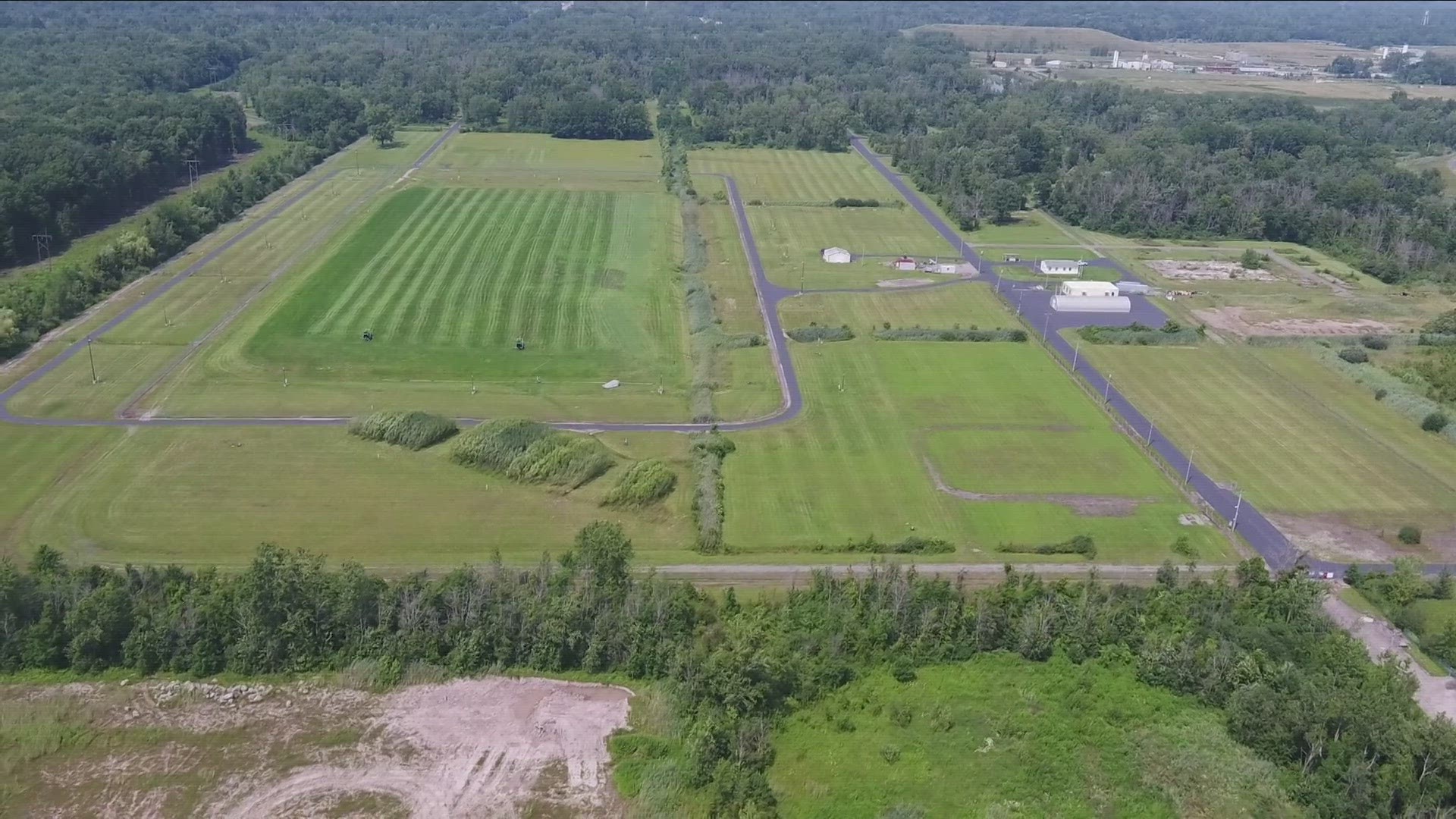LEWISTON, N.Y. — The Army Corps of Engineers was recently awarded a $40 million contract with the goal of beginning the long process of removing Manhattan Project waste from a Niagara County storage site.
For decades the, especially for the residents who grew up and lived near the site, there is still concerns about the health impacts the waste had.
Over 250,000 cubic yards of radioactive waste are stored at what is now called the Niagara Falls Storage Site, according to the Army Corps of Engineers.
The radioactive wastes, residues and contaminated soil contain Radium, Thorium, Uranium and other volatile chemicals from various industries that occupied the site throughout the 40's, 50's, 60's and 70's.
Lake Ontario Ordnance Works
In 1942 the federal government took control of 7,500 acres of land in Niagara County, specifically in the communities of Lewiston, Porter and Ransomville.
In October 1942 a TNT manufacturing facility, Lake Ontario Ordnance Works, officially began the production of 390,000 tons of TNT per day.
By July 1943, however, the United States was churning out so much ordnance and munitions for World War II that the facility was no longer needed.
Even though there was only TNT production on the site for 9 months, contamination from the manufacturing lingered in the soil and drainage systems through the 1980's.
According to several reports and investigations, the TNT facility at LOOW was never decontaminated before parts of the 7,500 acres were sold, or used, by other military departments and private developers.
Unbeknownst to the general public at the time, during that same period a top-secret project was underway in laboratories and factories across the country that would ultimately change the course of the war and the next 80 years of history.
The Manhattan Project.
Atomic Niagara
Beginning in 1944 waste from the development of the atomic bomb by the Manhattan Engineering District began arriving at the former Lake Ontario Ordnance Works (LOOW) site.
K-65 uranium rods, in addition to radioactive sludges code-named L-30 and L-50 were routinely transported the LOOW site. Those sludges were stored in a water treatment area of LOOW in 1944.
There was nothing special about the LOOW site in Niagara County, according to a 1981 NYS Assembly report. Niagara County was selected, according to an Atomic Energy Commission official in the report, simply because the land was easily made available, close to a reliable and cheap power source and outflows to Lake Ontario.
That same NYS Assembly report also determined that as early as 1949, there was seepage of uranium residues at the LOOW site because of cracks in the storage tanks.
The LOOW site has multiple drainpipes, even to this day, that filter into nearby creeks. While the Army Corps of Engineers says that there is no longer contamination in those drainpipes, for decades they were contaminated with radioactive residues from the storage of Manhattan Project waste and the TNT production.
Eventually LOOW became the storage site of contaminated Manhattan Project material as far west as St. Louis, MO, and as far east as Deepwater, NJ.
A 165 open-air silo was used to store barrels of K-65 uranium sludge, and that silo housed radioactive material until 1980's.
Concerns from residents
Grace Crewe-Austin grew up on Balmer Rd. in the town of Porter and lived there her whole life.
For several years, Austin has been keeping a record of Lewiston-Porter-Ransomville residents that have been diagnosed or passed away with various types of cancer.
"There are too many people passing away with still living passing away with cancers, just about every type you can imagine," Austin said. "I wanted to know why."
Austin's list has nearly 400 names, including several members of her own family.
"My mom had non-Hodgkins lymphoma and my dad had lung and bone," Austin said. "My brother Russell's still living in Arizona, he's got colon cancer, my sister Linda, breast cancer, mine's breast cancer."
New York State conducted a study of cancer cases around the area of the LOOW/NFSS site from 1991 through 2000.
While the report took 8 years to complete, it was inconclusive in determining if there was a cancer cluster.
The report did find that there were elevated cases of some cancers in men and children, but did not link them the Manhattan Project waste.
The report however, did not rule out that the radioactive material as a cause for various cancer cases in the area.
"Putting everybody at risk in this neighborhood, in this area was outrageous," said Vincent Agnello. "That should have never happened."
Agnello is the president of the advocacy group Residents for Responsible Government. He and many members of the Lewiston-Porter community fought, over the course of a decade, for a total removal of the radioactive waste at the Niagara Falls Storage Site.
In 1986, the interim waste containment site was constructed to contain all of the Manhattan Waste that was found on the LOOW site. But it was always a temporary solution and the clay containment only had a 25-50 year lifespan.
"We should be protected from health hazards," Agnello said. "There should have been recognition back then this needs to be cleaned up, but again it comes down to money and liability."
The Army Corps of Engineer's selected a $500M plan to completely remove the waste, but that project is several years from starting. In the short-term, a $40M contract was awarded to begin cleaning up residule waste that is currently outside the confines of the interim waste storage facility on the NFSS.

